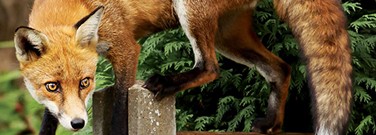Why Animals Came Out to Play During the Pandemic
By Kylie Wolfe
As many stayed within their own four walls to help prevent the spread of COVID-19, wild animals began exploring city streets. Coyotes were spotted in San Francisco, mountain lions in Boulder, and the list goes on.
Government guidelines and stay-at-home orders haven’t necessarily caused an increase in animal populations, but they may have changed their behaviors. In reaction to quieter towns and less traffic, it’s no surprise that a few species decided to see what the hubbub, or lack thereof, was all about.
Here are a few reasons you may have seen more wildlife than usual this spring:
Room to Roam
Animals are very careful and calculating creatures. They strategically avoid predators, including humans, as they search for food and shelter. This often means steering clear of populated areas during the day.
Black bears are a prime example, typically choosing to roam at night. But when the pandemic hit, more of them were spotted in broad daylight. The same is true for coyotes. They were no longer scared off by crowds but instead welcomed by empty public spaces.
Peace and Quiet
Believe it or not, animals are greatly influenced by human behavior and they adapt in response. Birds, for example, will sing at different times to avoid competing with traffic and other noisy activities.
Lately, there have been less noises for animals to accommodate. This lack of noise pollution may be a simple explanation for the increased presence of wildlife in residential areas. Less traffic means they’re more willing to cross the street, test new territories, and chase new food sources.
Nature’s Normalcies
While some animals decided to expand their explorations, others were taking care of timely business. In the Northern Hemisphere, March, April, and May are considered migration months for a variety of birds. And those that don’t migrate will mate, attracting partners with song.
This explains why people may have heard more birds chirping, but what about snakes? Springtime is their time to come out of hibernation. They’re looking to eat up, warm up, and partner up. While quarantine is a possible explanation for increased animal sightings, it’s certainly not the only reason.
Undivided Attention
As people remained home, peering out windows or taking walks in the woods, it’s likely they became more observant than usual. Spending time in nature, looking for distractions, and being at home instead of work or school created new opportunities to spot wildlife.
It’s easy to imagine these animals stepping outside their comfort zone, changing their behaviors in response to ours, but maybe the explanation is simpler than that.
Coexisting Creatures
Species that live in close proximity to humans are likely to change their way of life and adapt when needed. They’re considered behaviorally flexible, hunting and foraging when we’re not around, whatever that may mean.
Animals that come out to play during the day are attracting attention, so, at the very least, maybe society will gain an appreciation for their presence. And now we know what animals do when they think we’re not looking.
Discussion Questions
- Have you noticed more wildlife lately? If so, why might that be?
- How do human behaviors influence animal behaviors?
- What other reasons could explain an increased wildlife presence?
Vocabulary
- Behavior
- Noise Pollution
- Predator

